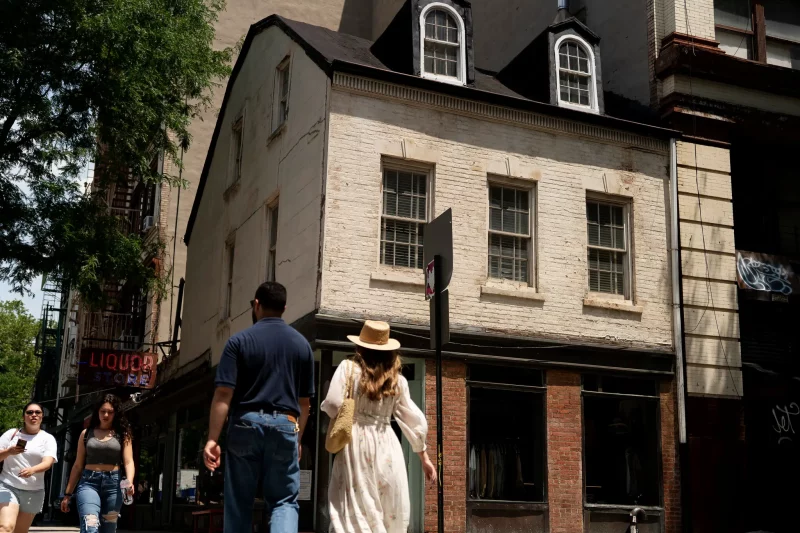A Tiny House in Manhattan Has a Link to the Underground Railroad
Share
Explore Our Galleries
Breaking News!
Today's news and culture by Black and other reporters in the Black and mainstream media.
Ways to Support ABHM?
By John Freeman Gill, New York Times
Before it was a clothing store, it was a bar, and before it was a bar, it was a key part of American history.vc

In a city of showy skyscrapers climbing ever higher in their bids to catch the eye, the beguiling little brick-and-wood house at 2 White Street in TriBeCa is striking precisely because of its humble scale and design.
Built in 1809 by Gideon Tucker, a school commissioner who ran a nearby plaster factory, the two-and-a-half-story, Federal-style corner house is exceedingly rare as a Manhattan home whose sloping gambrel roof and original dormer windows have survived more than two centuries.
The ground floor of the little house was divided into multiple storefronts, which in the 20th century held a variety of mom-and-pop shops serving a working-class neighborhood known until the 1970s as Washington Market: a corner barbershop with a candy-striped pole, a cigar store, a liquor store, a travel agency and a footwear shop with a distinctive shoe-shaped sign suspended above West Broadway. Now combined into a single storefront, the current retail space retains raffish details of its liquor-store days, including a retro red-and-blue neon sign and period gilt window lettering advertising cognacs and cordials.
In the past 14 years, the building has become a fashion destination, as two haberdashers — first J. Crew and now Todd Snyder — have sold men’s wear from the evocative corner storefront.
Less well known, however, is 2 White Street’s antebellum incarnation as a destination of a very different kind: the home of a prominent Black abolitionist minister and a possible stop on the Underground Railroad, the network of Black and white activists who helped African Americans flee Southern slavery before the Civil War. From 1842 until his death in 1847, Rev. Theodore S. Wright lived in the house, helping conduct fugitives to freedom in more-Northern parts of the country or Canada.
Although 2 White Street was declared an individual landmark by the city Landmarks Preservation Commission in 1966, followed by the house’s inclusion in the Tribeca East Historic District in 1992, neither designation report even mentioned Wright. In the years since, the minister’s obscurity has persisted. In interviews, three tenants who operated out of the corner storefront over most of the past 28 years said they had never heard of Wright or the building’s abolitionist history until informed by a reporter.
Find out how occupants felt after learning of the building’s history.
Much is unknown about the underground railroad. Earlier this year, more information was uncovered about Harriet Tubman, who is known for her work with the underground railroad.
Discover more articles like these in ABHM’s breaking news archives.











Comments Are Welcome
Note: We moderate submissions in order to create a space for meaningful dialogue, a space where museum visitors – adults and youth –– can exchange informed, thoughtful, and relevant comments that add value to our exhibits.
Racial slurs, personal attacks, obscenity, profanity, and SHOUTING do not meet the above standard. Such comments are posted in the exhibit Hateful Speech. Commercial promotions, impersonations, and incoherent comments likewise fail to meet our goals, so will not be posted. Submissions longer than 120 words will be shortened.
See our full Comments Policy here.